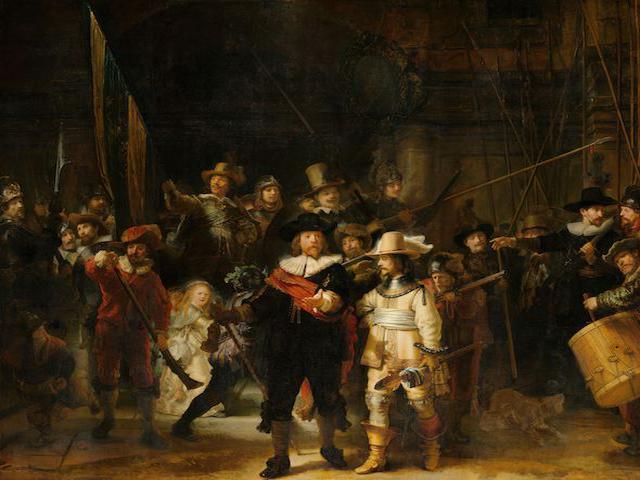The Night Watch

The Night Watch, a masterpiece of universal painting created by the renowned artist Rembrandt in 1642, holds a special place in the Rijksmuseum as the most famous painting in its collection. Originally titled 'the military company of District II under the command of Captain Frans Banninck Cocq', this iconic piece is a group portrait of a division of the civic guard. What sets this painting apart is Rembrandt's unique approach to portraying the militia group. Instead of the traditional orderly row or banquet scene, the figures are depicted in a dynamic and lively manner, as if they are preparing to embark on a mission as guardians of order within the city.
The composition of The Night Watch is carefully crafted to draw the viewer into the scene. The central figure, Captain Banning Cocq, establishes the focal point of the painting by gesturing towards his lieutenant and extending his hand towards the viewer, inviting them to become a part of the action. Lieutenant van Ruytenburgh, illuminated with a yellow tone to stand out in the composition, is depicted receiving orders to prepare the company for training. Additionally, the presence of a young girl in the painting adds a mysterious and intriguing element. Positioned in a beam of light, she stands out from the rest of the group, leading some to speculate that she may be a portrait of Saskia, Rembrandt's late wife.
The title 'The Night Watch' is somewhat misleading, as the painting actually depicts a daytime scene within a darkened space. The misconception arose in the 19th century when the painting had become darkened and obscured by dirt and rust, giving the impression of a night setting. However, the use of lighting in The Night Watch is one of its most striking features. Rembrandt masterfully creates a contrast between light and shadow, casting a golden glow over the figures and creating a sense of drama and movement within the composition.
As visitors stand before The Night Watch in the Rijksmuseum, they are not only witnessing a historic moment frozen in time but also experiencing the genius of Rembrandt's artistic vision. The painting continues to captivate audiences with its intricate details, dynamic composition, and innovative use of light and shadow. It serves as a testament to the skill and creativity of one of the greatest artists in history, inviting viewers to immerse themselves in the world of 17th-century Amsterdam and the vibrant spirit of the civic guard.
© ChatGPT 3.5